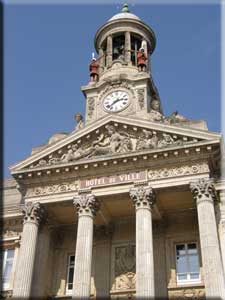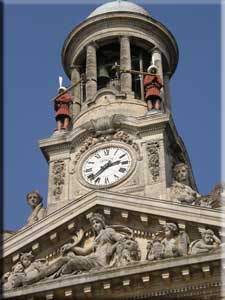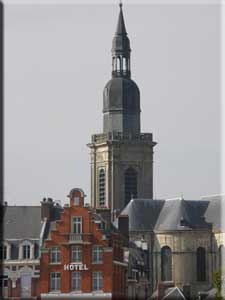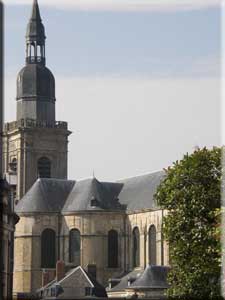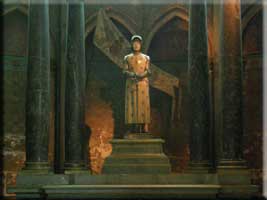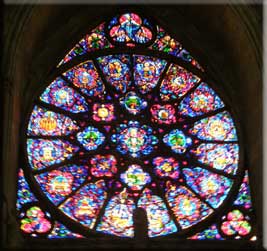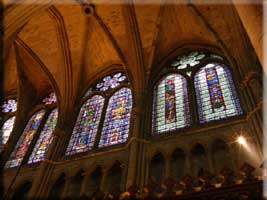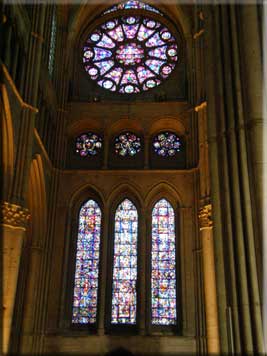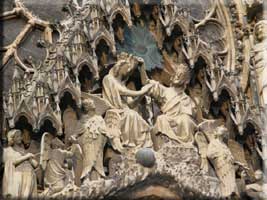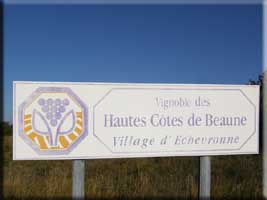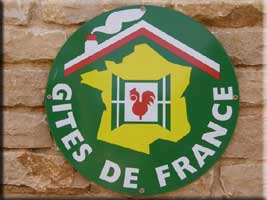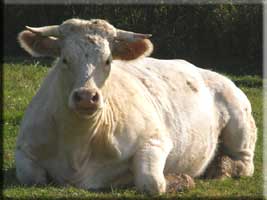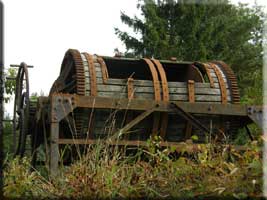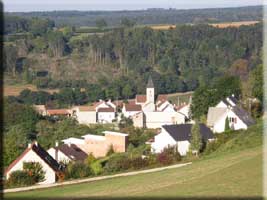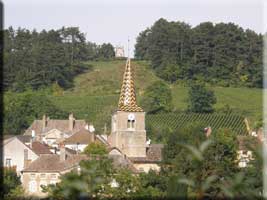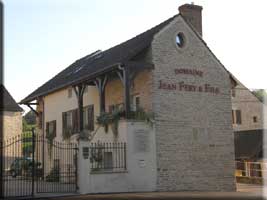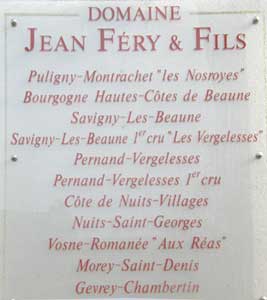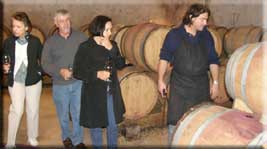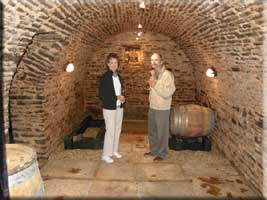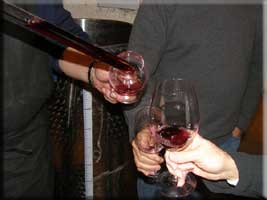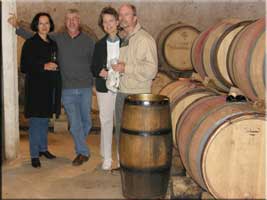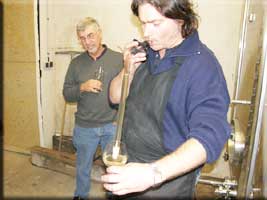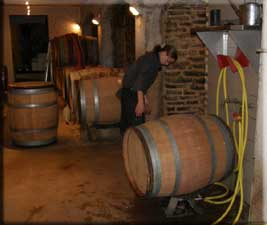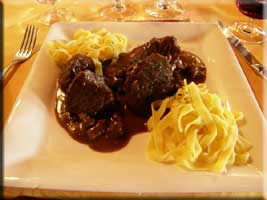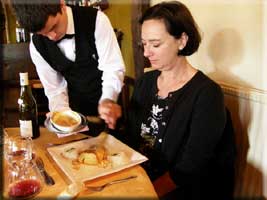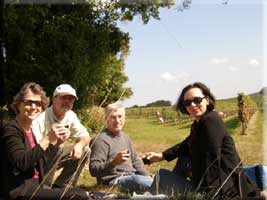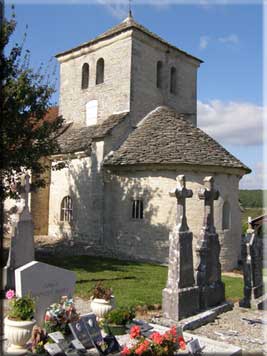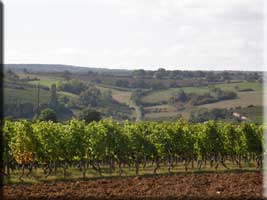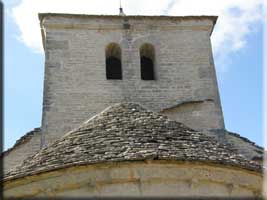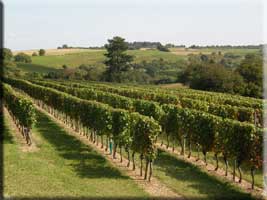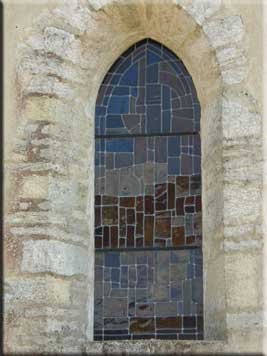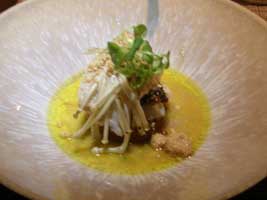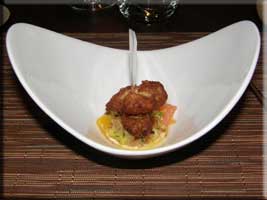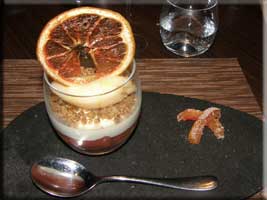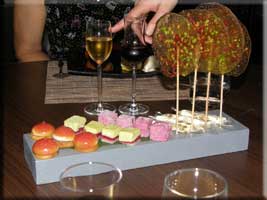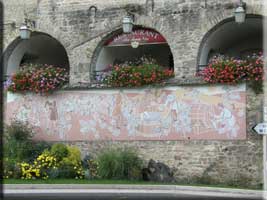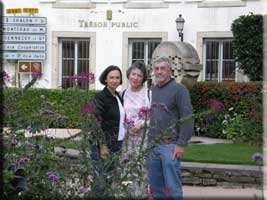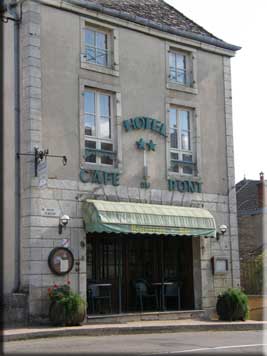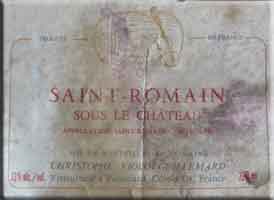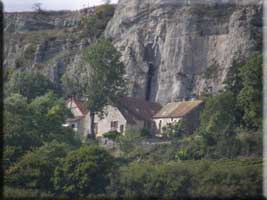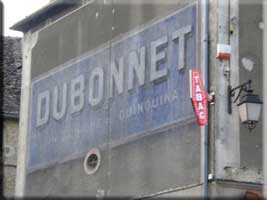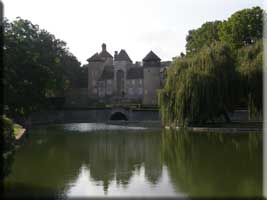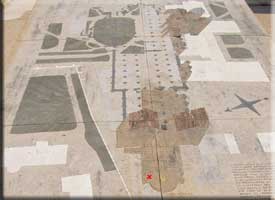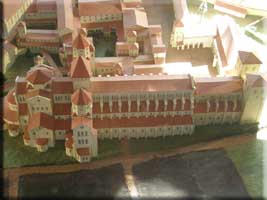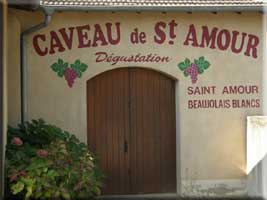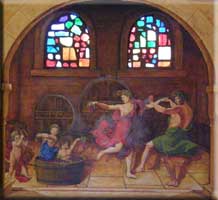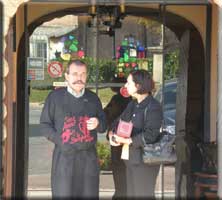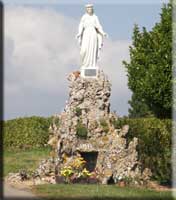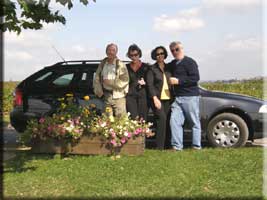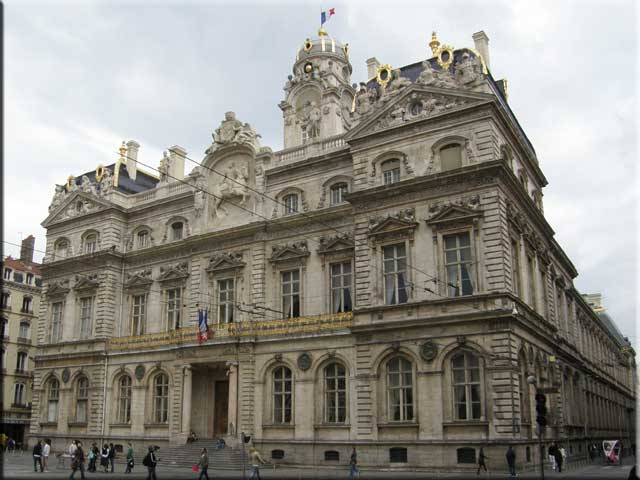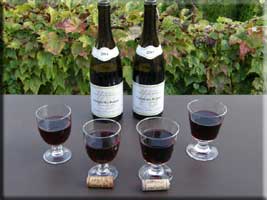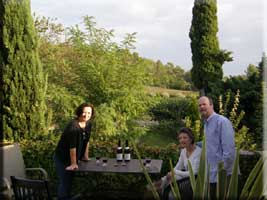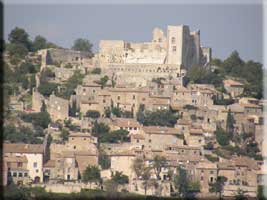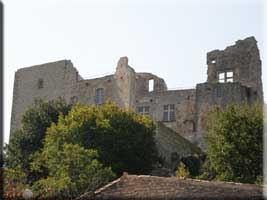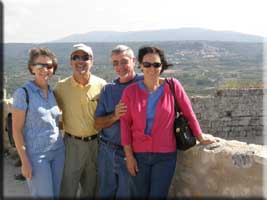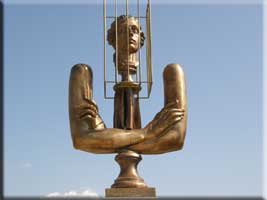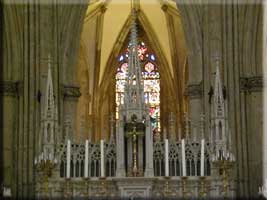
|
La Belle France |
|
In order by journey (towns where we stayed)
Reims |
In alphabetical order (all places we visited)
Beaune |
Arrival to Cambrai
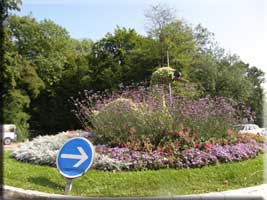
|
We flew into Brussels, avoiding the hassle of Charles de Gaulle Airport and Paris traffic. You walk to the car rental office (We got a five door, 1.6 liter Skoda from Europcar for $74/day) and then to the car. Within an hour we were driving out of the airport with our new Garmin nuvi 370 guiding us to Reims. It can be set to several languages and has both masculine and feminine voices in several dialects of English. We chose Jill for American English. We eschewed changing money at the airport as we thought the rates would be too high. Big mistake as after the euro came along, the money changers departed. I had made almost all arrangements for our 14 day stay via the internet based on info in our Michelin Red Guide 2008 France: Restaurants & Hotels |
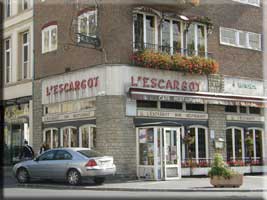
|
| The Garmin took us through Cambrai, a city of 34,000, and found a bank, but they did not want to change $2000. It was lunchtime, so we asked JIll to find a restaurant. She found one with a terrace on the canal, but alas, it was complet. They recommended Restaurant l'Escargot in Cambrai (not L'Escargot Restaurant in Pburg!) and Jill knew where it was. As in most restaurants in France, one can order a la carte, but there are generally several menus that offer a choice of appetizer, main course, and a dessert at a favorable price compared to ordering each individually. The menus often offer your choice of dessert or a cheese platter. More expensive menus may offer both the sessert and cheese platter or a fish course and a meat course or all five courses. We all choose menus at 23€ (about $35 at the prevailing 1.5 rate). Appetizer choices included paté, escargot, and salads. Our main courses were daurade, a light white fish, rognons de veau (veal kidneys) - surprisingly mild, and two orders of a very flavorful sausage (andouilette). | ||
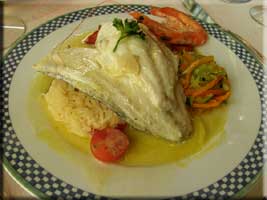
|
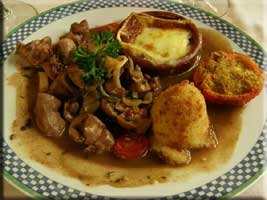
|
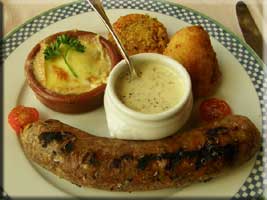
|
Cambrai to Reims
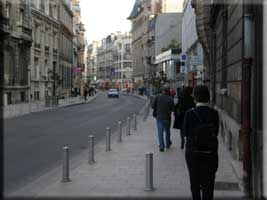
|
We continued on to Reims with little trouble as Jill brought us right to the Hotel Univers. Our total drive was less than 200 miles, taking four hours, broken up by a stop for lunch. The hotel was on a lovely park/boulevard a short walk from the cathedral. Unfortunately, the boulevard was under construction and parking was quite tight. It wasn't as pleasant and simple as I had hoped. Nonetheless, we did find a parking spot quite close and we were here to see the cathedral, not the park. Alas, the cathedral was also under construction with a major scaffold heading up the left tower. Top left is a street scene as we walked to the cathedral. Top right is the cathedral. It was built started in the 13th century and finished in the next. It reached a height of 270 feet and was 455 feet long. Clovis, the French King, converted to Christianity here in 496 and every French King was crowned here until the revolution.
Joan of Arc merits a chapel here (left). The stained glass on the left is the rose window and on the right is the complete front feestration. The cathedral was heavily damaged in WWII and Marc Chagall, a Russian Jew who was living in France, was commissioned to replace several of the windows. We had dinner that evening at Le Foch, a one-rosette restaurant in our Michelin guide, owned by Madame and Jacky Louazé. Madame runs the front of the house and he is the chef. The hotel had been chosen because of the park inside the boulevard, its proximity to the cathedral (a ten minute walk), and this restaurant. I hadn't made dinner reservations as I was unsure how everyone would feel after an overnight flight and a rather large lunch. We decided that we felt ragged, but hungry and awake enough for a good dinner. Unfortunately, the restaurant was full on a Friday evening. Luckily, Madame overheard the waiter telling us this bad news and caught us as we were leaving, informing us that there had been a late cancellation. Like almost all starred restaurants, the meal started and ended with elaborate lagniappes. Several mini-appetizers were brought to the table before any of the appetizers that we ordered and after desserts, another round of mini-desserts was brought out with coffee. You will see that we only did restarant meals every other night, and severly limited our visits to one-starred restaurants. The meal was quite good and with a couple bottles of good wine, we managed to spend about $125 per person.
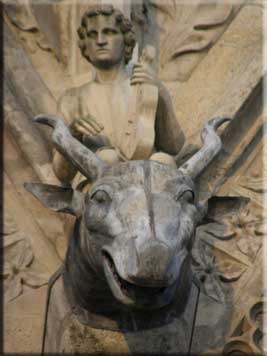
|
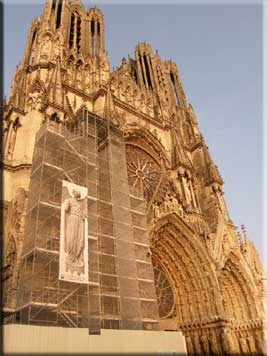
|
Reims to Echevronne/Beaune
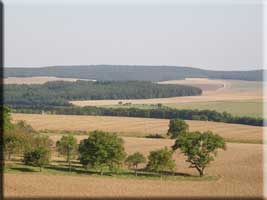
|
As we left the Champagne district, the land switched from vines to food crops with lots of sugar beets. It was beautiful rolling countryside that turned to vines again as we skirted Chablis on the way to a gite in Echevronne outside of Beaune. We circled around the southwest part of Dijon and headed into the Cote d'Or, working our way south past some of the more famous vineyards: Gevrey-Chambertin, Chambolle-Musigny, Clos Vougeot, Nuits St Georges, and Aloxe-Corton. We turned into the valley of the Rhoin river separating Beaune from Aloxe-Corton and headed around the back side of Aloxe-Corton through Pernand-Vergelesses to our gite at the Jean Fery Winery in Echevronne. Sylvain from Select Wine Cellar found this place for us. His father had worked on the property. |
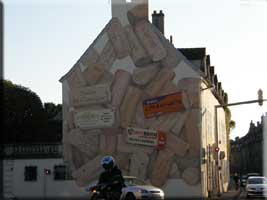
|
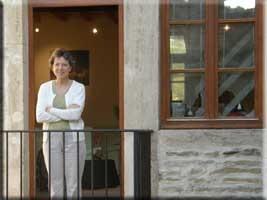
|
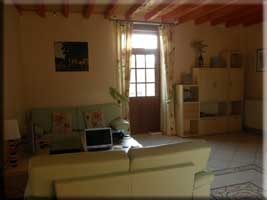
|
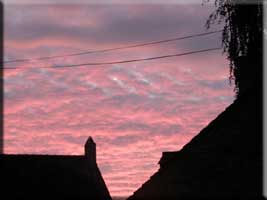
|
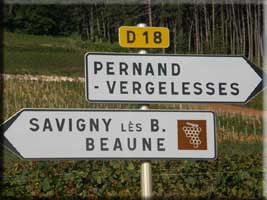
|
That afternoon we had a lunch at L'Ouvrée in nearby Savigny-Les-Beaune. I had stayed here in the 70's and revisited the restaurant/hotel/winery several times over the years. Originally it was in the Michelin and all three businesses were in operation. It is no longer listed in the guide and appears that only the restaurant is functioning, but functioning well. We all had three course menus (ap, main course, and dessert or cheese) with a couple bottles of local wine for a bit under $100 per couple. The menus featured Beef Bourguignon, Veal with chanterelles, and a fish souflée. Service was great as were the food and wine. We stayed home that evening, having a light meal.
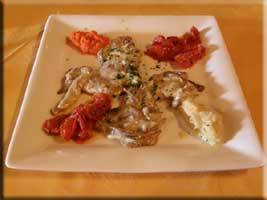
|
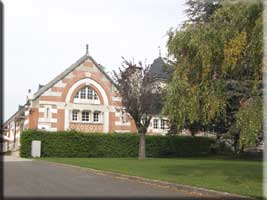
|

|
||

|
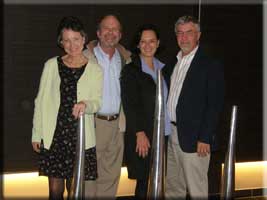
The birthday dinner was at Le Charlemagne, nestled in the vineyards of Pernand-Vergelesses. It's a very new restaurant, just awarded its first Michelin rosette. The cuisine is French with Japanese influences and a very Japanese presentation. I chose it based on the Michelin rating and the fact that it was a mere three miles from our gite. We just pointed the car downhill and in a matter of minutes, we were there. Much like nighttime water views in St Martin, the lovely vineyards faded from site as the sun set but there was a hint of light in the distance. It didn't matter too much as the decor was out of this world modern and techno. One entered by walking across what appeared to be a fish tank built into the floor. The fish scattered as you stepped above them, but it was all a clever computer program running a projection of fish on the floor. The dinner was spectacular. We had three bottles of increasingly fine Pernand-Vergelesses, starting with one from the winery where we were staying and ending with a vineyard that was across the street. Our dessert came with more sweet wine. It was a very swanky place so we were hesitant to take too many photos, but you can get an idea form these "no flash" shots. We had a great time and were the last to leave. Even our waiter had preceded us!
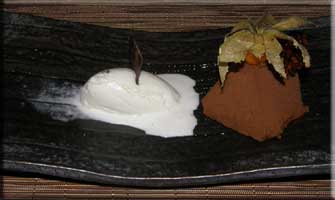
|
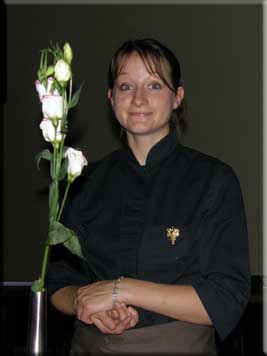
|
Echevronne/Beaune to Mercurey
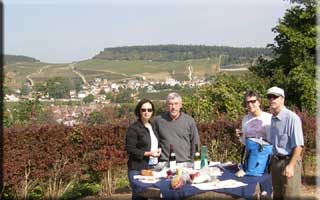
|
On Wednesday 24 Sep we drove south to Mercurey and stayed at Hostellerie du Val d'Or. Mercurey (pop. 1269) is only fifteen miles south of Beaune, about seven miles west of Chalon. We drove off through Pommard, Volnay, and Chagny before we let Jill guide us through the vineyards to Mercurey. We arrived early enough for lunch, but did not want a restaurant meal as we had reservations at the hotel restaurant (one rosette in the Michelin) that evening. There was a winery in the center of town that was happy to sell us 2005 Mercurey for less than $20 and told us about a spot up on the hill south of town. The harvest had commenced and the fields were full of workers. On the other side of the valley we could see the track that Jill had found for our entrance into town. It came down steeply through the vineyards and both sides were pitched to the middle, making it a drainage ditch, preserving the soil in the vineyards, when it rained. |
Mercurey to Lyon
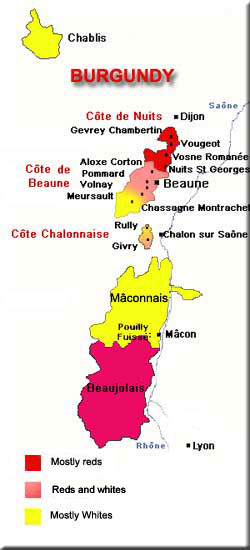
Our picnic spot was high on a hill, near a church. We had lovely views, but it was a bit cool and very windy. The car is a Skoda, made by Audi in the Czech Republic. It got pretty good gas mileage, carried four of us plus luggage, and moved rather smartly, if requested. |
On the left is a map showing Burgundy, with the finest burgundies in the north. Echevronne is near Aloxe Corton, about 10 miles from Beaune. Mercurey is between Rully and Givry in the Cote Chalonnaise. We headed southeast from there, getting on the superhighway at Chalon. There is a discussion of Burgundy wines in an SXM-Info newsletter. The Cote Chalonnaise gives way to the Maconnaise and after passing through Macon, the hills of Beaujolais appear. There is no town of Beaujolais, although there is a Beaujeau. Red Beaujolais is made with the gamay grape and a small amount of white wine is made from the chardonnay grape. a group of about 30 towns in the center of the region are recongized as a cut above the rest and have the right to label their wine Beaujolais Villages. About a dozen towns in the north make even more distinctive wine and can put the village name on the label. Moulin a Vent and Brouilly are probably the best known although St Amour gets a lot of play around Valentine's Day. It is also the most northern town and we arrived here just in time for a picnic lunch. We stopped at the visitor center. We sampled a few wines and bought an older St Amour in a magnum for our picnic lunch. The host sent us up a nearby hill to a picnic spot with a great view.
|
Lyon
 This is an apartment building with a trompe l'oeil mural on it's narrow edge. Lyon has several of these, as you can see on this site. The most famous is the Fresque des Lyonnaise, a fresco on the side of another apartment building with famous people from Lyon on every balcony. There is even a guide to tell you who is on the wall. |
It was a mere 80 mile drive from Mercurey to Lyon, but a world of difference. Lyon is the second largest city in France, an industrial hub, an educational center, the center of a vast amount of farming, and awash in a sea of great wine. The city has almost a half million people and the built up area surrounding it has a million more. We were staying at the Grand Hotel des Terreaux, near the confluence of the Rhone and Saone rivers. Where we were, the two rivers were flowing essentially southward, about a quarter mile apart. In another mile, the rivers join and the Rhone flows on to through Avignon and Arles to the Camargue, the salt flats just outside Marseille.
Given the food and wine nearby, it's no wonder that some of the greatest chefs in France are here. In their shadow are many restaurants serving copious quantities of very tasty food at spectacular prices. The liver may come from chickens, not force-fed geese and the filet mignon gives way to faux-filet, but the quality of ingredients is high and the ability of the chef is higher still. Tables are generally cramped and service may stress speed rather than comfort such that they make up in volume what they lose on cost. Nonetheless, we were never hurried out of a restaurant. Many of these restaurants in Lyon have banded together to form a group called the Authentic Bouchons of Lyon. On our first night we walked to Chez Hugon for a fine three course meal at $38. Vast quantities of Cotes du Rhone washed it down. The next evening after a vigorous tour of the fine arts museum, we had an even better meal at Deux Places for about $40 with a gallon or so of Crozes-Hermitage. Altogether, we were paying about $60 per person for more food and drink than anyone needed, but there were no complaints. We managed picnic lunches and snacks either in our hotel room or in city parks. |
Lyon to Cadenet
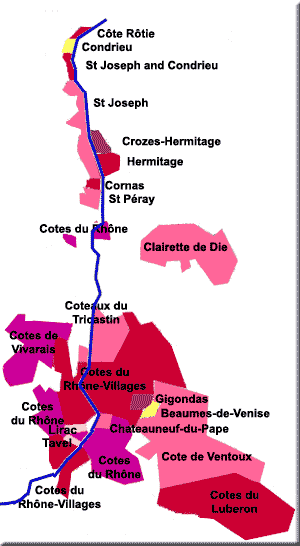
|
On 27 Sep we made our way out of Lyon to the autoroute and were moving along at about 85 mph which considerably shortened the time to travel 185 miles to Cadenet. Despite a late start, we made it to our turnoff in Avignon by lunchtime. Instead of turning east to Cadenet in the Luberon, we took a very short detour west to Tavel and some of the best rosés in the world. There is (or will be) a dissertation on this wine map in our 7 Dec 2008 newsletter. Lunch was at the Auberge de Tavel. As our hotel in Cadenet had cooking facilities, we were planning a light dinner there and splurged for a few 39.50€ lunches with an ap, main course, cheese, and dessert. I had stayed here in the mid-80's and the hotel, grounds, and restaurant were as good as I remembered. The wines were of course Tavels and we even stopped at the local cooperative salesroom on the way out of town and bought more.
|
Lacoste
Bonnieux
Bories
|
Later that day we took a drive through some very rugged and spectacular countryside to reach the village of the bories in Gordes, Vaucluse. Some of these dry-stone houses were built 3000 years ago. They are laid up dry and use the principle of a corbel vault. They exist in similar forms in many places around the world, but this is an amazing concentration of them. This village was restored in 1969 and 1976 and looks as it did when the last inhabitants abandoned it in the 19th century. The bed didn't look too comfortable and the pillow is worse.
We had dinner that evening in Cadenet at La Source, named after the spring that trickled into the dining room. Appetizers of Beef Carpaccio and warm goat cheese salad led to lamb stew, salmon, and fagottini of parma ham. Desserts were sorbet, chocolate fondant, creme brullee, and tiramisu. We had inexpensive local wines: a bottle of Bastide de Rhodares followed by a pitcher of Cotes du Luberon Rouge. The total bill was less than $200. |
||
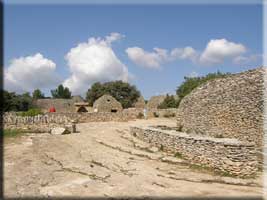 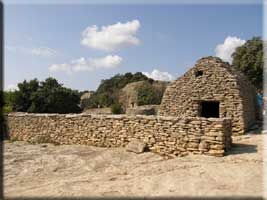 |
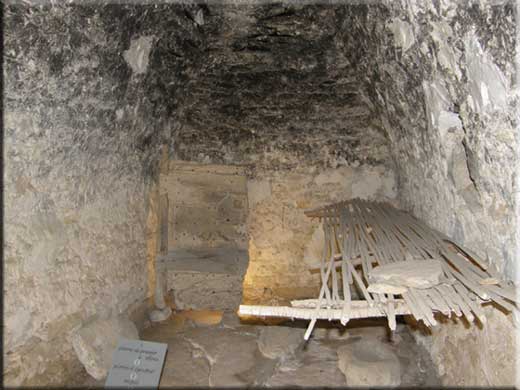 |
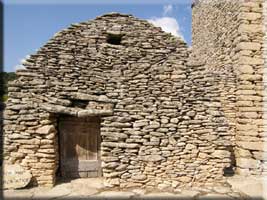 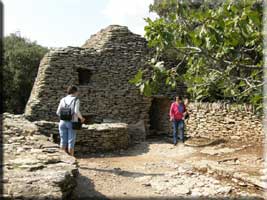 |
Pont du Gard
| On 29 September (Monday) we headed back through Avignon to the Pont de Gard. It means bridge over the Gard river, but it is much more than a bridge. It's an aqueduct that the Romans built to bring water some 30 miles from the Eure springs to Nimes, a town of 20,000 around 50 AD. It took 15 years to build this waterway. This section alone required 60,000 tons of stone and reaches a height of 160 feet to keep the water flowing by gravity from the spring to Nimes, despite a drop of only 40 feet, barely 1 foot per mile. The photos can't do this site justice, as the enormity of the task accomplished with out heavy equipment is the most striking aspect of this exercise. The overview map gives a hint of the project scope, but enlarge the photo at the bottom left and check out the people walking in the riverbed. Click the top right photo and check out the people walking along the bridge on the first level. When Martha first visited this site in the early 70's, she remembers walking along the top of the watercourse, 160 feet in the air. When I visited in the late 70's, that was no longer possible, but I did walk through the watercourse after driving over the bridge. Today the road ends in a parking lot from which you walk to the aqueduct and there is no access to anything other than the first level and the riverbed. | ||
  |
 |
  |
Pope's Palace
Cadenet to Macon via Orange
Macon
| It was about 220 miles to Macon and given the superhighway from Orange, it was quite quick, even stopping for a picnic lunch after the tour of Orange. In Macon we made our way to the Moulin du Gastronome, a newish place on the outskirts of Macon. They had a pool, a lovely terrace and plenty of parking out in the country. As they had a Michelin grape cluster, the wine list was quite good, featuring the local wines. While we awaited dinner we had a Macon Rouge Lacharme in our room for about $20. We had an even better Macon at dinner with our appetizers and a bottle of Monthelie Rouge premier cru with the main courses. A half bottle of Chapoutier's Beaumes de Venise accompanied dessert. The menus on the website are worth a gander. Our total bill for four people in two rooms with a great three course wine-filled dinner and four breakfasts came to about $600. If one were to explore this area (and it is worth exploring, Cluny was quite close, and you would be in the center of Burgundy), this would be an excellent place to stay. |

|
Macon to Gorze via Metz
Metz to Brussels
|
© all rights reserved Designed by KC Consulting |
